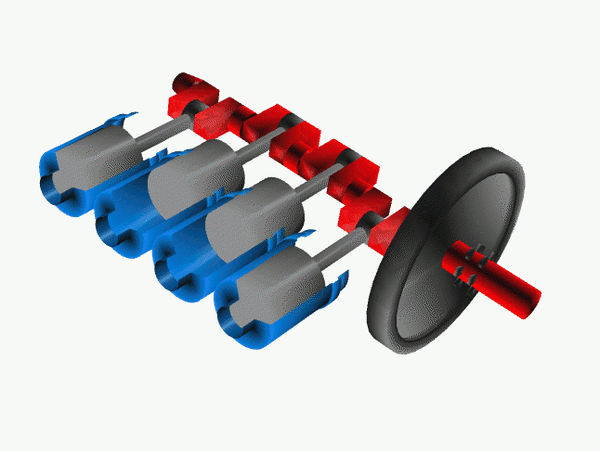HOW ENGINE WORKS - FOUR PISTON STROKES

Introduction to How Engine Works
We learned from previous post how torque translates to horsepower. Now, let's take a deeper look into the beginning phase right after engine ignites.
This post will cover
- What makes piston move
- Four Piston Strokes
- Spark to power stroke

First, let's take a look when a car is in motion. When you step on the accelerator, throttle opens to let air flow into an intake manifold. The intake manifold is connected to cylinders, six cylinders for 911s, and the air enters each cylinders. Here it mixes with fuel. The combustion of air and fuel is what pushes down piston in cylinder and as air-fuel combustion occurs more, piston also speeds up generating more torque and revolution. Therefore, as the air and fuel are injected, combustion occur, and piston heads are pushed down; this is how power is generated.

As you've probably figured out, combustion leaves unusable gases. We have to let it out while we constantly inject new air into cylinders. This process requires sequential orders. There are 4 phases so that an engine continuously runs. In this case the phases are called strokes as the necessary process occurs while a piston is in motion. The following is the sequential order, a cycle:
Intake - Air and fuel are injected as valve opens and the mixture expands to empty space in a cylinder created by down motion of piston.
Compression - Piston goes upward, compressing air and fuel mixture. As pressure rises, temperature increase as well.
Power - Due to high pressure and temperature, combustion of air and fuel occurs once given a spark. Then, the reaction strongly pushes down piston head. This is where downward force acts upon the piston, hence the name Power.
Exhaust - The waste from the combustion is pushed out of the cylinder as piston goes upward movement and valve opens creating an exit.

As mentioned in the Power stroke above, we need an aid of spark to initiate combustion. The spark comes from the voltage of battery. For simplicity since we have four strokes, let's use example of four cylinder engine. Each piston is in different phase. So, spark is not necessary for all four cylinders at the same time. A cylinder that is about to go through Power stroke is given a spark.
Now, you might wonder, when you just crank an engine, how can each piston be in different phase when there was no previous motion? A piston needs to go through a certain phase before it moves on to the next one? That's what we are going to find out in the next post.
On to the next one.
One Line Summary
Combustion of air and fuel pushes down pistons rendering strokes and the sequential order of strokes in each cylinder is what make the engine running.